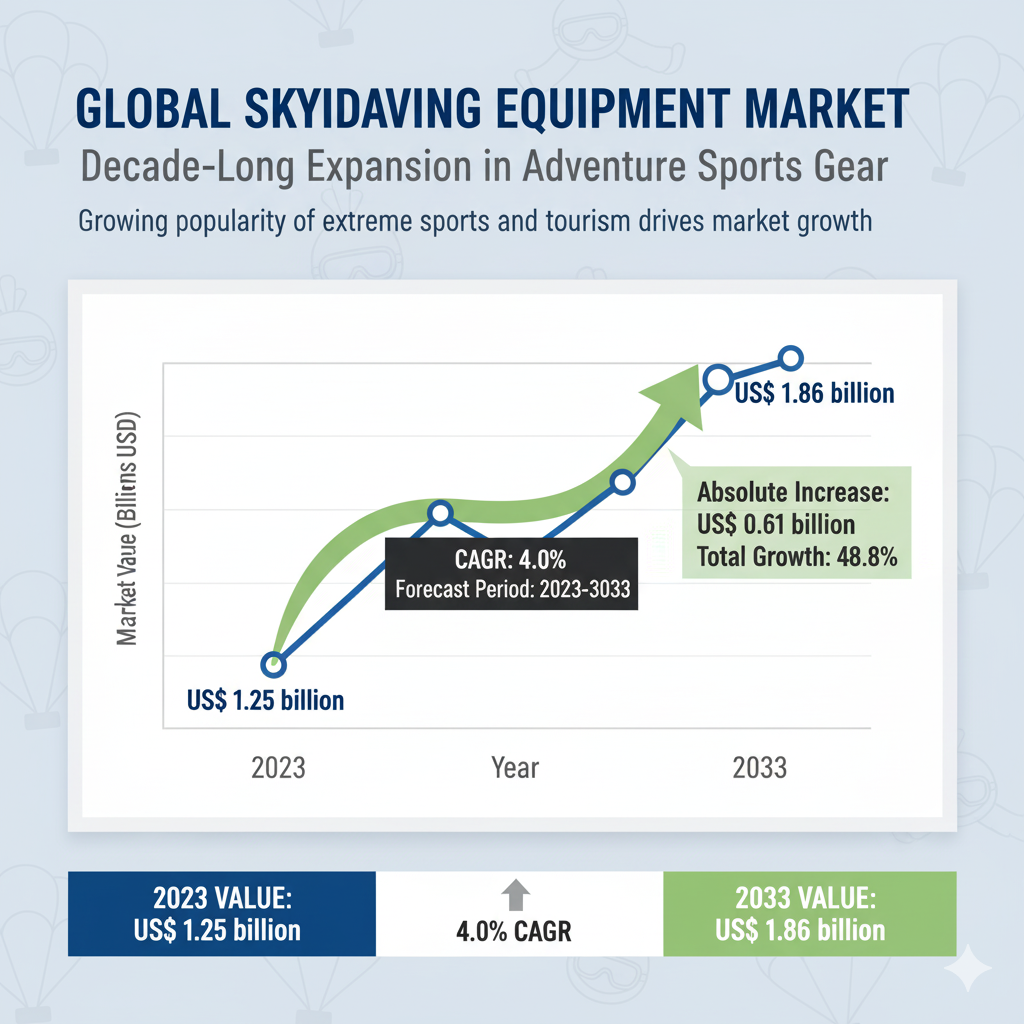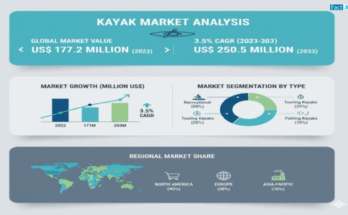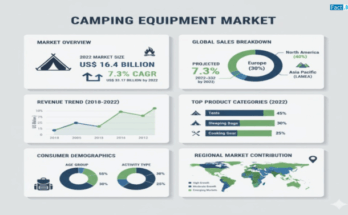According to a study published by Fact.MR, the global skydiving equipment market stands at US$ 1.25 billion in 2023. Worldwide demand for skydiving equipment is forecasted to advance at a CAGR of 4% and reach a market value of US$ 1.86 billion by 2033. Growing popularity of adventure sports is projected to boost the demand for skydiving equipment across geographies over the next decade.
As thrill-seekers increasingly turn to skydiving for once-in-a-lifetime experiences, industry manufacturers and suppliers are presented with lucrative opportunities to innovate, expand, and capture a growing share of this exhilarating market.
Adventure Sports Fuel Demand for High-Quality, Safe Equipment:
The steady increase in participation in extreme and adventure sports is the core catalyst behind the global surge in skydiving equipment demand. From North America’s professional skydivers to Asia’s emerging enthusiasts, the sport’s universal appeal lies in its promise of adrenaline and freedom.
“Adventure sports have become more than recreation — they are now lifestyle choices,” says a senior analyst at Fact.MR. “This cultural shift is compelling manufacturers to design equipment that not only ensures safety but also delivers superior comfort, precision, and performance.”
Consumers are prioritizing reliability and innovation in skydiving gear, which is spurring manufacturers to adopt cutting-edge technologies and lightweight, durable materials. Harness systems and container equipment, in particular, are expected to generate significant revenue, with global sales projected to reach US$ 717 million by 2033, advancing at 4.7% CAGR.
Technological Advancements Elevate Industry Standards:
The next decade will witness a surge in R&D investment and technological integration as manufacturers race to redefine performance and safety. Start-ups and established brands alike are focusing on aerodynamic designs, enhanced parachute fabrics, smart altimeters, and digital tracking devices to optimize both professional and recreational skydiving experiences.
The entry of advanced composite materials and precision-manufactured components is revolutionizing the market, reducing weight without compromising durability. These innovations not only boost performance but also improve safety standards, which are paramount in this industry.
Companies such as Aerodyne Research, LLC, Velocity Sports Equipment, LB Altimeters, Sun Path Products, Inc., and United Parachute Technologies are leading this innovation wave, developing equipment that aligns with international safety regulations while elevating the comfort and agility of skydivers.
Adventure Tourism Spurs Global Market Expansion:
The booming adventure tourism industry has become a key driver of skydiving equipment sales. Iconic destinations like Dubai, Switzerland, Hawaii, and New Zealand have turned skydiving into a major tourist attraction — blending scenic beauty with adrenaline-fueled excitement.
Europe alone is anticipated to command 47.1% of global revenue by 2033, fueled by a strong culture of outdoor recreation, mountainous landscapes, and government-backed adventure initiatives. Germany, in particular, is emerging as a hotspot for skydiving enthusiasts due to its picturesque terrains and rigorous safety standards, driving sustained demand for certified, high-quality equipment.
In China, the market is projected to surge at an impressive 6.9% CAGR, reaching US$ 365 million by 2033, propelled by urbanization, rising disposable income, and a growing number of modern skydiving centers. Meanwhile, the United States, already valued at US$ 310 million in 2022, continues to be a major hub for skydiving innovation and participation, reflecting a broader cultural shift toward experiential lifestyles.
E-Commerce Platforms Take Skydiving Gear to New Heights:
The digital revolution is reshaping the distribution landscape of skydiving equipment. With the rapid growth of online retail, manufacturers are finding direct-to-consumer channels increasingly effective for reaching global customers. Online platforms now feature a comprehensive selection of skydiving gear — from custom-fit harnesses and helmets to canopies and goggles — with the added advantage of price comparison, user reviews, and doorstep delivery.
This trend has proven especially influential among new-generation skydivers who value convenience, customization, and rapid access to the latest models. As a result, brands investing in strong e-commerce integration and digital marketing strategies are witnessing exponential growth in sales volume and brand visibility.
Challenges: Cost Barriers and Market Accessibility:
Despite strong growth prospects, the high initial cost of premium skydiving gear remains a key restraint for widespread adoption. Parachutes, harnesses, and altimeters represent substantial investments for individual users and smaller clubs, limiting participation in cost-sensitive markets.
To address this, manufacturers are exploring cost-efficient production techniques, including modular component systems, material optimization, and partnerships with skydiving training centers to offer rental or leasing programs. These strategies are expected to make skydiving more accessible while expanding customer bases globally.
Start-Ups Driving Innovation and Market Disruption:
Emerging companies are injecting new energy into the skydiving equipment ecosystem. Through advanced engineering, sustainability initiatives, and smart technology, start-ups are reshaping industry dynamics. Many are leveraging AI-driven design, sensor integration, and biomechanical testing to improve safety outcomes and enhance user comfort.
These firms are also focusing on lightweight and eco-friendly materials, such as biodegradable fabrics and recycled composites, aligning with global trends in sustainability and responsible manufacturing.
Opportunities for Industry Leaders and Investors:
With rising global interest, the skydiving equipment market is set to attract both strategic investments and corporate collaborations. Manufacturers focusing on product differentiation, digital expansion, and regional partnerships will find strong opportunities in both mature and emerging economies.
Fact.MR’s analysis underscores that companies that can balance innovation, affordability, and safety are poised to capture dominant market positions. Expansion into fast-growing regions like Asia-Pacific and Latin America, coupled with localized production, will be key for market penetration and brand recognition.
The next decade heralds a golden era for the skydiving equipment market — one where technological advancement, adventure tourism, and consumer enthusiasm converge to fuel sustainable growth. From cutting-edge gear innovation to global expansion strategies, industry leaders are not only meeting but redefining the demands of modern adventurers.
As participation surges and new destinations emerge, the skydiving equipment market’s ascent to US$ 1.86 billion by 2033 reflects more than market growth — it represents humanity’s enduring desire to soar beyond limits.
Browse Full Report-https://www.factmr.com/report/skydiving-equipment-market



